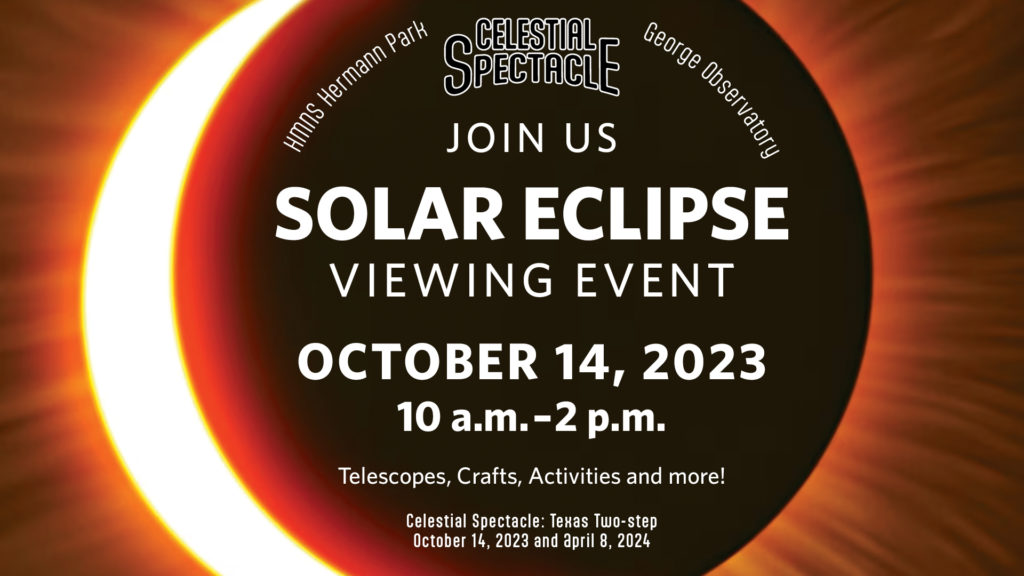
The New Moon of Saturday, October 14, 2023, aligns with the Sun and the Earth well enough to cast its shadow toward Earth, causing an eclipse. However, the Moon is at apogee (greatest distance from Earth) on October 10, and does not come closest to the Earth (perigee) until October 26. Since this eclipse occurs with the Moon farther than average from the Earth, its umbral shadow, where the Moon completely blocks the Sun, tapers off to a point about 17,000 miles above the Earth. No one, then, can see a total eclipse. There is a path, however, directly under the Moon’s shadow, where the shadow would have reached if the Moon were close enough. Anyone in that path, shown in orange on this site, sees the Moon in silhouette with a ring of Sun around it. This is called an annular eclipse. Although we’re not quite in this path (Corpus Christi and San Antonio are, though), Houston is within the penumbra, where the Moon partially blocks the Sun. Therefore, we will see a normal partial solar eclipse, in which the Moon covers 84% of the Sun’s disk at most.
At 10:28 AM CDT, look for the Moon to take a ‘bite’ out of the Sun’s disk. The Moon covers the southern limb of the Sun, since we are north of the Moon’s path. This limb is the right side of the Sun’s disk in the morning. Maximum eclipse, when the Moon covers 84% of the Sun’s disk, is at 11:58. By 1:37, the Moon no longer blocks the Sun. After this, we’ll see our next partial solar eclipse in Houston on April 8, 2024. (That eclipse is total across central Texas.) Obviously, cloud cover would prevent us from viewing the eclipse. However, even an overcast sky will get noticeably darker around 11:58, which is maximum eclipse.
The Houston Museum of Natural Science (HMNS) is an excellent place to observe this eclipse. We have invited volunteers to set up solar telescopes at the Museum in Hermann Park and at George Observatory. George Observatory’s event has sold out, though. If you haven’t already made plans to go there, join us at HMNS! Each telescope we set up will be filtered to provide a safe view of the Sun. We will also project the Sun’s image in many different ways so you can observe the eclipse safely. From 11:00 to 12:45 on October 14, the Burke Baker Planetarium will offer eight free 15-minute shows about the eclipse. Tickets for these shows will be first come, first serve. Even if clouds prevent us from seeing the eclipse outside, you can experience it through our planetarium shows.
Caution: Never look directly at the Sun with the naked eye or through an unfiltered telescope. Permanent eye-damage will result. Purchase viewing glasses from the HMNS Museum Store.






